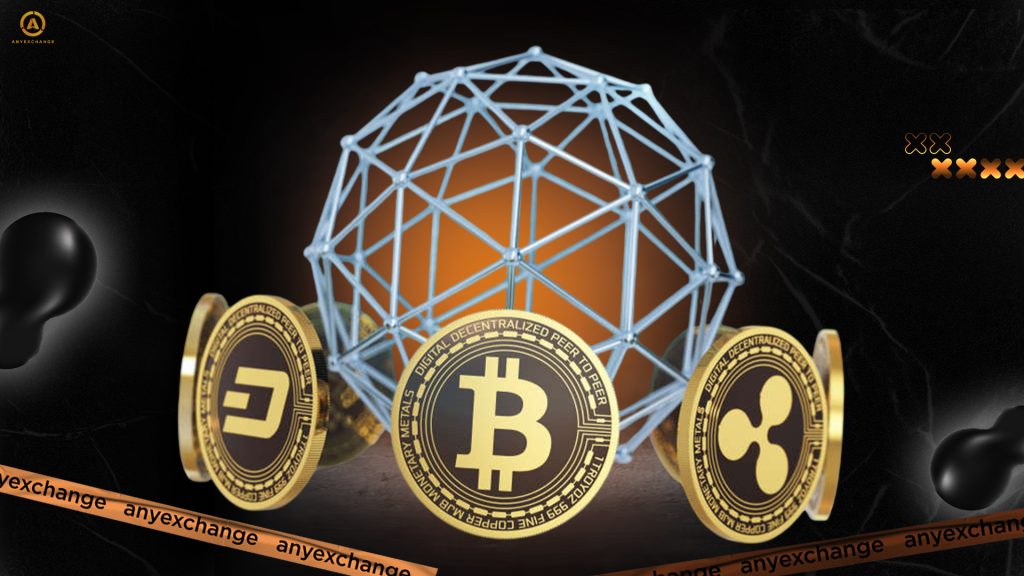
Amid global economic instability and growing distrust of traditional financial systems, more and more central banks are beginning to reconsider the structure of their international reserves. Cryptocurrencies in central banks’ reserves are on the agenda. A few years ago, such a prospect seemed futuristic, but today the interest in digital assets as an element of foreign exchange reserves is becoming more and more practical.
The emergence and development of cryptocurrencies has changed the rules of the game in the global economy. El Salvador, for example, took a bold step in 2021 by recognizing bitcoin as legal tender and including it in the structure of government reserves. This caused a widespread international outcry, including the IMF’s negative reaction to cryptocurrency reserves, expressed in warnings of potential financial risks. Such an experience remains an exception, but it has become the starting point for a global discussion — are digital assets really capable of complementing or even replacing traditional assets such as gold or foreign exchange?
In this article, we will look at what cryptocurrency reserves of countries are, why central banks are investing in cryptocurrencies, what exactly are the advantages of cryptocurrencies as a reserve asset that make them attractive, and what are the risks of cryptocurrency reserves that central banks need to consider.
What are crypto reserves for central banks?

Cryptocurrency reserves of countries represent a portion of international assets held by central banks in the form of digital currencies — such as bitcoin, ether and others. Unlike traditional reserves, which inсlude gold, foreign exchange and securities, cryptocurrencies are stored on a blockchain, which provides transparency, decentralization and enhanced security.
Digital assets in foreign exchange reserves are a phenomenon with no clearly defined rules or standards. Unlike gold, which has been a proven store of wealth for centuries, digital assets are highly volatile, making them riskier but potentially more lucrative assets.
Nevertheless, the growing interest in crypto as a strategic tool signals the beginning of a shift in traditional reserve policies. Some central banks using cryptocurrencies are doing so on an experimental basis, treating digital assets as complementary to traditional assets.
Reasons for central banks’ interest in cryptocurrencies

Diversification of foreign exchange reserves
One of the main reasons why central banks are investing in cryptocurrencies is the desire for diversification. In a volatile geopolitical and economic environment, broadening the range of assets helps to reduce risk and increase the resilience of the financial systеm.
Cryptocurrencies and gold in reserves are not in opposition, but rather complementary. While gold retains its role as a stable asset, cryptocurrencies offer the potential for rapid growth and technological flexibility. Including virtual coins in the reserve portfolio allows central banks to respond more dynamically to the challenges of the modern economy.
Protection against inflation and economic crises
With high inflation and the devaluation of national currencies, digital assets, especially bitcoin in central bank reserves, are beginning to be seen as a hedge. Bitcoin, with its limited issuance and independence from regulatory decisions, acts as an alternative to devaluing currencies.
Thus, against the backdrop of the economic crisis in Argentina, El Salvador and Venezuela, its use in public administration was seen as one of the possible defense mechanisms against hyperinflation and loss of confidence in the fiat systеm. Such an approach underscores the role of bitcoin in the global economy as a new asset class.
Strengthening financial independence and sovereignty
For developing countries or states under sanctions pressure, cryptocurrencies can be a tool to strengthen financial sovereignty. Moving away from dependence on the US dollar and towards more decentralized assets reduces external vulnerability. Their use in international settlements and as part of reserves allows these countries to pursue more autonomous policies. In this context, the strengths of cryptocurrencies as a reserve asset are clear. Thus, the impact of cryptocurrencies on central banks’ foreign exchange reserves around the world is already being felt, albeit on a limited scale.
Country cases on the use of cryptocurrencies in reserves

El Salvador’s experience with bitcoin
El Salvador became the first country in the world to officially recognize bitcoin as legal tender in September 2021. As part of this groundbreaking move, the government also included bitcoin in its international reserves structure.
El Salvador purchased BTC through its sovereign wealth fund, Chivo, investing tens of millions of dollars. Despite the asset’s high volatility, the government continues to build crypto reserves and use the proceeds for social programs such as building schools and hospitals.
El Salvador’s experience, however, has elicited mixed reactions. On the one hand, the country has demonstrated an alternative path to financial independence. On the other hand, it has received warnings from the IMF and the World Bank about risks to macroeconomic stability. Nevertheless, according to President Nayib Bukele, the country will not abandon its crypto-oriented strategy.
Examples of other countries
Several countries have already publicly expressed interest in cryptocurrencies as a potential part of government reserves:
- USA: At the level of individual states, such as Texas and Wyoming, the possibility of creating crypto reserves is being discussed. Federal authorities have been cautious so far, but the use of bitcoin as part of an investment portfolio is already taking place in private entities working with the government.
- Brazil: The central bank is exploring ways to integrate digital assets into the reserve structure, especially in light of the launch of its own CBDC (digital real). Cryptocurrencies are seen as a means to diversify and increase currency stability.
- China: Despite its strict policy on cryptocurrencies, China is purposefully developing the digital yuan and analyzing the role of digital assets in international trade.
Opportunities and advantages of cryptocurrency reserves
The pros and cons of cryptocurrency reserves are the subject of constant discussion both at the level of states and in the professional environment. Among the main advantages:
- High liquidity. Major digital assets are easily exchanged for fiat 24/7, without weekends or geographical restrictions.
- Transparency. All transactions are recorded on the blockchain, reducing the risk of corruption and increasing trust.
- Low storage costs. Unlike gold or cash, cryptocurrencies require no physical space or security.
- Long-term growth. Historically, bitcoin has shown steady upward momentum, making it an attractive asset to accumulate.
In addition, cryptocurrencies can contribute to financial stability by reducing dependence on U.S. and EU monetary policy. In the long run, this could strengthen the position of emerging markets and give them more flexibility in managing macroeconomic risks.
Regulatory and legal risks
The main obstacle to integration is the lack of a clear international regulatory framework. Central bank regulation of cryptocurrency reserves is still in its infancy. Different countries have taken different approaches, ranging from outright bans to cautious approvals.
The IMF and World Bank are concerned about the possible destabilization of financial systems. Their main arguments:
- The high volatility of cryptocurrencies;
- The risks of money laundering and the lack of control mechanisms;
- The risks of cryptocurrencies being held by central banks;
- The lack of legal status in most jurisdictions.
Cryptocurrencies vs. gold and traditional assets in central bank reserves
First of all, it is a dispute between stability and innovation. Let’s compare them on key parameters:
- Yield: Digital assets have higher potential returns, but also higher risks. Gold is a stable, slow-growing asset.
- Security: Physical gold is hard to steal, but expensive to store.
- Liquidity: Cryptocurrencies are instantly convertible, while gold is not.
As a result, bitcoin can play the role of a strategic reserve alongside gold, not instead of it. The prospects for bitcoin in central bank reserves depend on regulatory developments, technological infrastructure, and global adoption of digital assets.
The Future of Foreign Exchange Reserves with Cryptoassets: Predictions and Prospects
The prospects for cryptocurrencies in reserves depend on many factors — from the level of technological maturity to the development of the regulatory framework. According to analysts, over the next 5-10 years, we can expect a gradual increase in the share of crypto in the composition of national reserves, especially in emerging markets.
Experts predict that national reserves in digital assets may become the norm for states seeking to reduce dependence on the U.S. dollar and strengthen economic sovereignty. Technology infrastructure will continue to evolve, providing more secure and convenient ways to store and manage assets.
In addition, new formats of sovereign cryptocurrency assets are likely to emerge by 2030, including CBDC-based ones that will be used not only for settlement but also as part of reserve policy.
What is the opinion of international financial institutions
The reaction of major international institutions remains cautious. The IMF has repeatedly emphasized that cryptocurrencies in government reserves pose a potential threat to financial stability, especially in countries with high foreign debt. The World Bank also advocates a cautious approach, calling for careful monitoring of how cryptocurrencies change central bank policies and the development of universal regulatory standards.
However, both organizations recognize the importance of innovation and are constantly monitoring the situation closely. Their agenda is not to ban cryptocurrencies, but to create a safe regulatory environment in which cryptocurrencies can exist alongside traditional assets in sovereign reserves.
Conclusion
The inclusion of crypto in international reserves is no longer a hypothesis, but an emerging reality. Albeit in a limited way, digital assets have already begun to penetrate the reserve structure of individual countries, providing them with new tools to manage risk and strengthen sovereignty.
Will they be able to rеplace gold or the dollar? Probably not in the near future. But they can be an important complement. After all, they are opening up new horizons for the global financial architecture.
Central banks are part of this trend, and investors should consider it as part of their long-term strategy. A smart mix of digital and traditional assets may be the key to sustainability in the new economic cycle.
Thank you for your attention to our article. Invest safely and profitably!
AnyExchange is a cryptocurrency exchanger that allows you to quickly and safely convert popular digital assets at a favorable exchange rate. Our company has been stable on the international financial market for more than five years, we work with leading payment systems, conduct transactions via bank cards and cash. Anonymous money transfers worldwide are also available on the platform.






